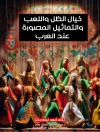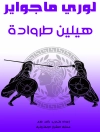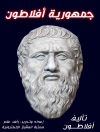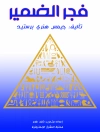This book explores the significance of Julius Caesar to different
periods, societies and people from the 50s BC through to the
twenty-first century.
* * This interdisciplinary volume explores the significance of
Julius Caesar to different periods, societies and people.
* Ranges over the fields of religious, military, and political
history, archaeology, architecture and urban planning, the visual
arts, and literary, film, theatre and cultural studies.
* Examines representations of Caesar in Italy, France, Germany,
Britain, and the United States in particular.
* Objects of analysis range from Caesar’s own commentaries
on the Gallic wars, through Shakespeare’s Julius Caesar, and
images of Caesar in Italian fascist popular culture, to
contemporary cinema and current debates about American
empire.
* Edited by a leading expert on the reception of ancient
Rome.
* Includes original contributions by international experts on
Caesar and his reception.
Содержание
List of Illustrations.
Notes on Comntributors.
Preface and Acknowledgements.
Part I Introduction.
1. Judging Julius Caesar.
Christopher Pelling.
Part II Literary Characterization.
2. The Earliest Depiction of Caesar and the Later Tradition.
Mark Toher.
3. Caesar, Lucan’s Bellum Civile, and their Reception.
Christine Walde.
4. Julian Augustus’ Julius Caesar.
Jacqueline Long.
Part III The City of Rome.
5. The Seat and Memory of Power: Caesar’s Curia and Forum.
Riccardo Valenzani.
6. St Peter’s Needle and the Ashes of Julius Caesar.
John Osborne.
7. Julius II as Second Caesar.
Nicholas Temple.
Part IV Nationalism and Statecraft.
8. Imitation Gone Wrong: The ‘Pestilentially Ambitious’ Figure
of Julius Caesar in Montaigne’s Essais.
Louisa Mackenzie.
9. Manifest Destiny and the Eclipse of Julius Caesar.
Margaret Malamud.
10. Caesar, Cinema, and National Identity in the 1910s.
Maria Wyke.
11. Caesar the Foe: Roman Conquest and National Resistance in
Freanch Popular Culture. in Fascist Italy.
Giuseppe Pucci.
Part V Theatrical Performance.
12. Julius Caesar and the Democracy to Come.
Nicholas Royle.
13. Shaw’s Caesars.
Niall Slater.
14. The Rhetoric of Romanita: Representations of Caesar in
Fascist Theatre.
Jane Dunnett.
Part VI Warfare and Revolution.
15. From ‘Capitano’ to ‘Great Commander’: The Military Reception
of Caesar from the Sisteenth to the Twentieth Centuries.
Jorit Wintjes.
16. Crossing the Rubicon into Paris: Caesarian Comparisons from
Napoleon to de Gaulle.
Oliver Benjamin Hemmerle.
Afterword.
17. A Twenty-First-Century Caesar.
Maria Wyke.
Bibliography.
Index.
Об авторе
Maria Wyke is Professor of Latin at University College London. She is author of Projecting the Past: Ancient Rome, Cinema and History (1997) and The Roman Mistress: Ancient and Modern Representations (2000), and is now working on her next publication Caesar: A Life in Western Culture (2006).












